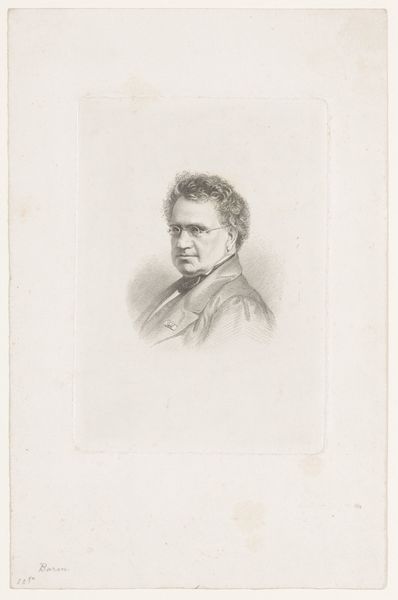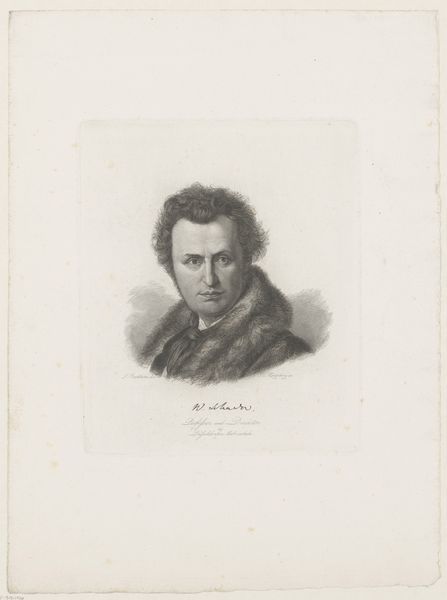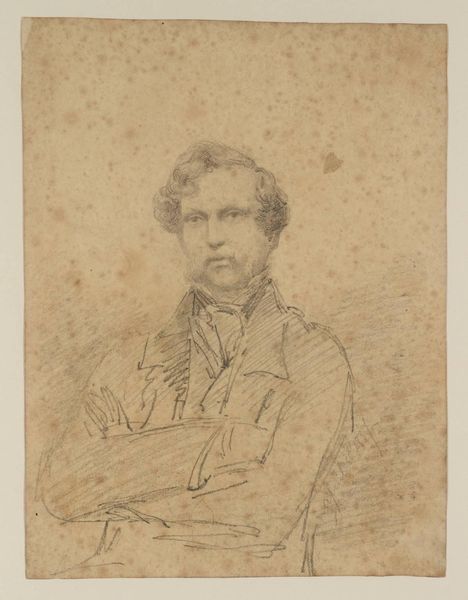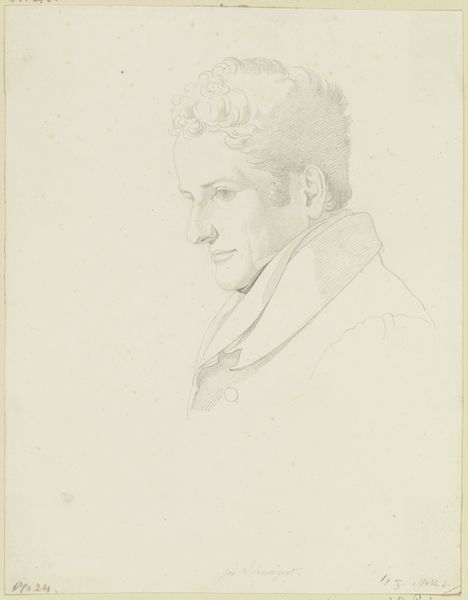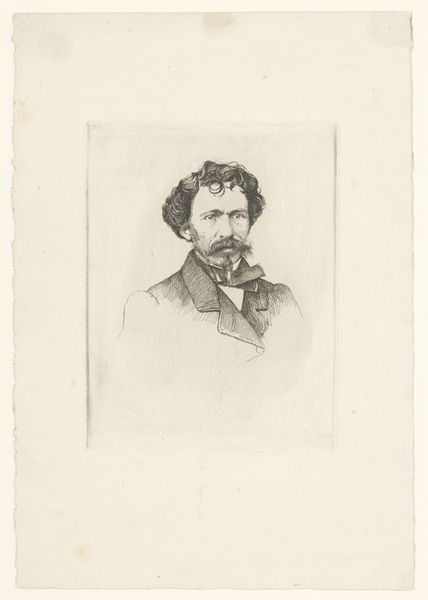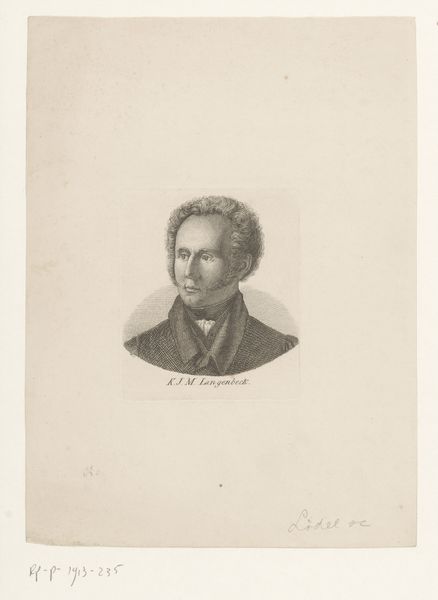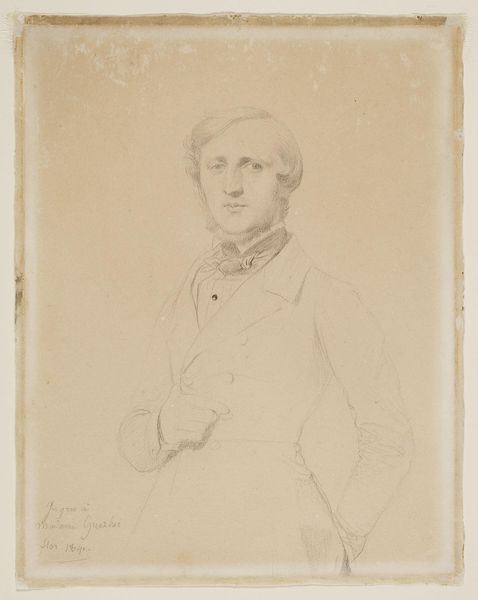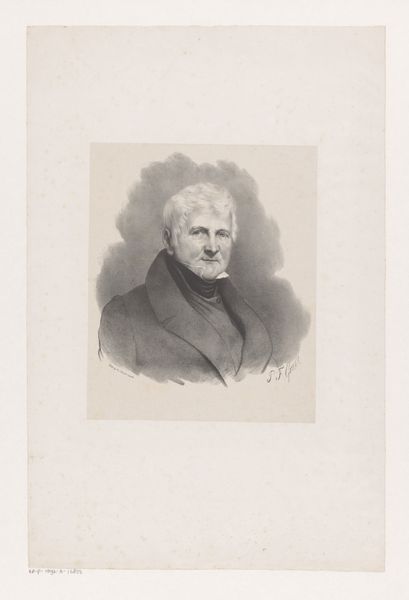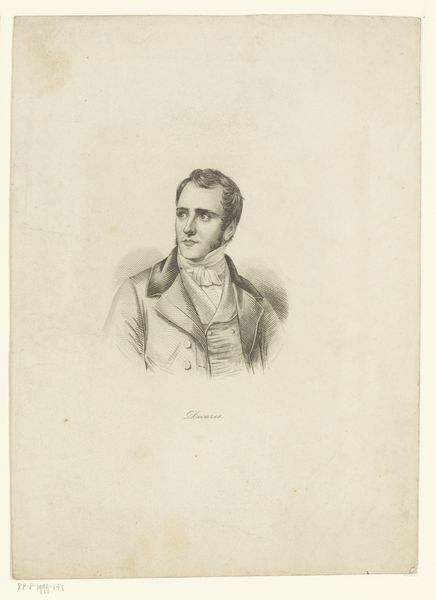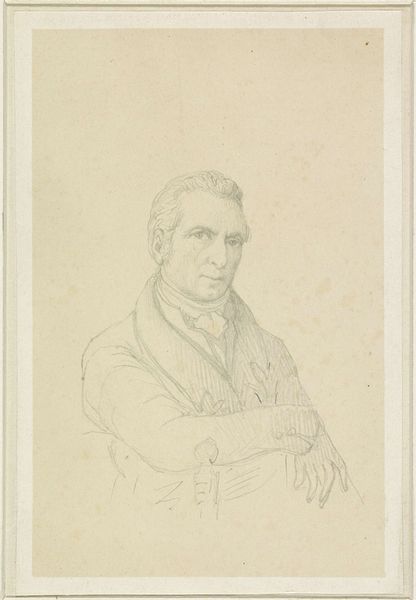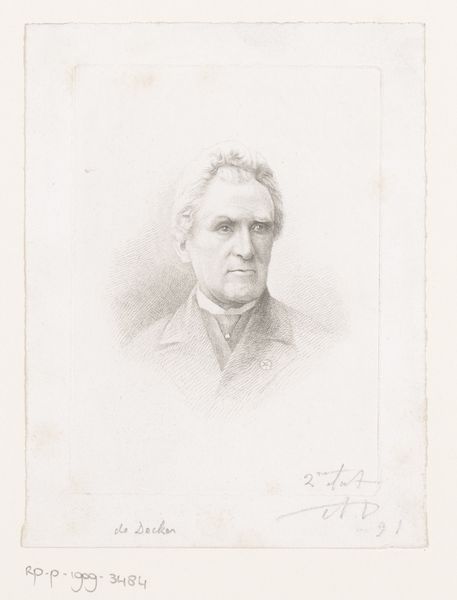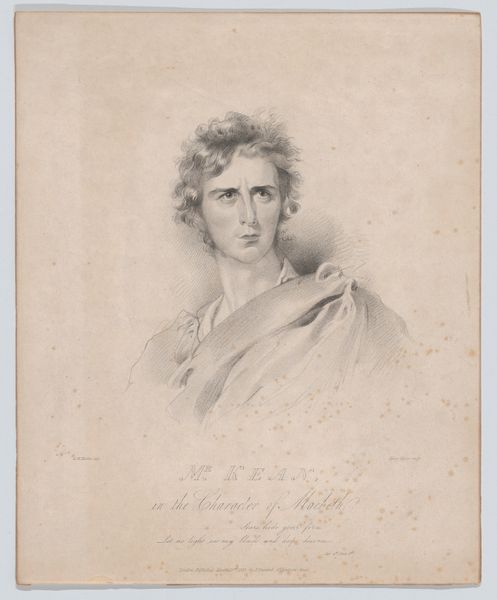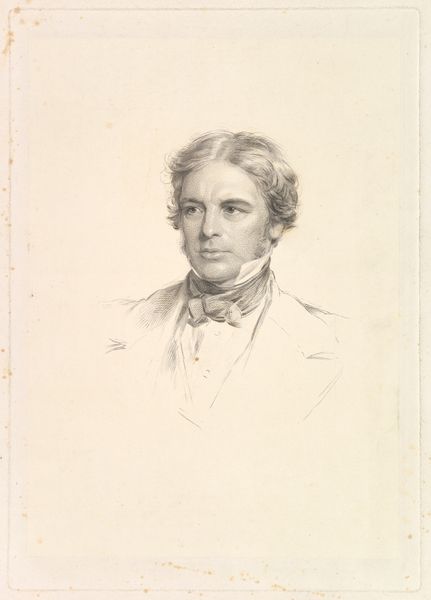
drawing, paper, pencil
#
portrait
#
drawing
#
paper
#
romanticism
#
pencil
#
realism
Dimensions: image (irregular): 8.57 × 8.26 cm (3 3/8 × 3 1/4 in.) sheet: 15.88 × 14.45 cm (6 1/4 × 5 11/16 in.)
Copyright: National Gallery of Art: CC0 1.0
Editor: This is Asher Brown Durand's "Commodore John Barry," made in 1830 using pencil on paper. The lightness of the sketch makes it feel almost ghostly. How should we approach interpreting a piece like this? Curator: From a materialist perspective, let’s consider the significance of Durand's choice of pencil on paper for depicting a figure like Commodore Barry. Why not oil paint, which was a more conventional material for portraits, particularly of prominent figures? Editor: I suppose pencil is quicker, cheaper. Was this possibly a preparatory sketch, a means to an end? Curator: Exactly! Pencil sketches on paper highlight the work involved in image creation, and the democratization of art production, compared to, say, commissioning an oil painting. It suggests a wider availability of portraiture. What does that shift in artistic practice signify in 1830? Consider the growing merchant class and their aspirations to the social status once held only by aristocracy. Does the image tell a different story depending on its medium? Editor: That’s a good point. The rougher medium speaks to a broader social sphere and access, less formal than a grand oil painting would convey. This isn’t about preserving a legacy in the grandest way possible. Curator: Precisely. Durand's choice to depict Barry in this manner underscores a shift in power dynamics and accessibility within the art world. So we must ask how the *means* of producing the image participates in conveying the subject. What assumptions were disrupted, or challenged, in rendering Barry with humble materials? Editor: I hadn't thought about it that way, but looking at the materials helps tell a whole new story about accessibility, consumption, and social status in the early 19th century. Curator: Absolutely! It’s a valuable reminder of how the "how" of art—its making—is deeply intertwined with the "why" it exists.
Comments
No comments
Be the first to comment and join the conversation on the ultimate creative platform.
